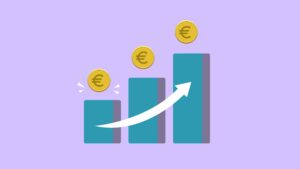SEO In E-Commerce
There’s arguably no bigger industry that SEO can have a bigger impact on than e-commerce. If the sole purpose of a website is to sell products, there is complete reliance on the success of a business on traffic to your site.
So, why SEO over Social, for example?
Well, to drive traffic through a social post, the client has to be introduced to it through sharing, engaging in your social media accounts or paid promotion. With SEO, the customer doesn’t need to catch your post shared by someone else or know who you are before they visit your site. They can just search for a particular product and find you that way. The conversion rates are going to be much lower on social posts as the chances of someone wanting your product when they see the post enough to click through are much, much lower than someone who has specifically gone out of their way to look for your product.
So, how can you get high keyword rankings for your E-commerce site?
Title Tags and H1s
First, you need to know what people are searching for. If your brand is called “Sweat-less” and you sell deodorant products, you might have set up your product page as “Sweat-Less Deodorant Blue Bottle” for example. You might have thought that this was the best description of the product, but its highly unlikely that that is what people are searching for.
Chances are, people don’t care about the colour of the bottle so it takes up valuable keyword space. Instead, look at your competitors, what do they say in their product titles?
Is it an antiperspirant, is it a spray, a roll-on, does it last 24 hours, 48 maybe? These are the type of things people will search for over the colour of the can. By not including these keywords in your titles or h1s, you’re stopping your product ranking for these terms. Try keeping your title tags within 60 characters.
Use a free keyword tool or speak to one of our experts today who can take all the time and stress out of optimising your products yourself and start generating some real ROI results. You can read more about our specialist services on our SEO for E-commerce page.
Once your title tags and headings are optimised, what else can you do?
Well, now look at your on-page content. Is there necessary information about the product that there isn’t much search behind but still might help generate a conversion? What’s your ISP over your competitors. Once someone is on the page, the body content beneath your product could be the difference between them converting and them not so think about it carefully. Sell your product!
Meta Descriptions
You can also look at the meta descriptions for the pages. Meta descriptions are the small body of text underneath the link on the search engine results. Use a meta description as an opportunity to invite someone in. Similar to the body content of the piece, use this as an opportunity to sell your product, all be it in much fewer words. Add a call to action such as “get yours now!” or if you’re selling a service, it could be “find out more here”. Test your meta descriptions on the page once you’ve done them. Make sure all of the text is readable for the potential customer.
URL Optimisation
Using your keyword research, implement this to the URL as well. Is there more search behind antiperspirant than there is for deodorant, whilst your product is both, for example? Change your URL to include a primary keyword. This should help rankings over time.
Image alt tags
Since Google can’t read images, they rely on alt text to know what it’s about. Include alt tags explaining what is in the picture so that google can see that the picture matches other ranking requirements, giving you a potential boost in the rankings.
This also gives you another spot to include your keyword on the page and gives you a shot at showing up in Google image results.
Overall, SEO for E-commerce is vital and something that you should implement immediately to see results. If this all seems slightly too time consuming or complicated, get in touch today to speak to our experts who can help put you in the right direction.





